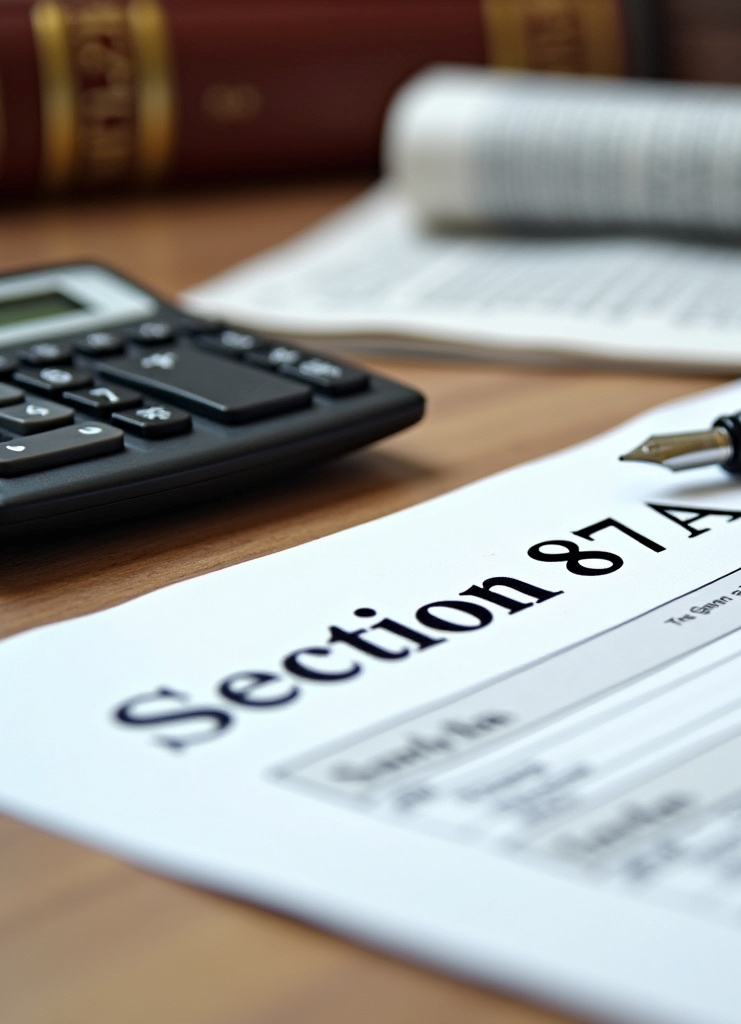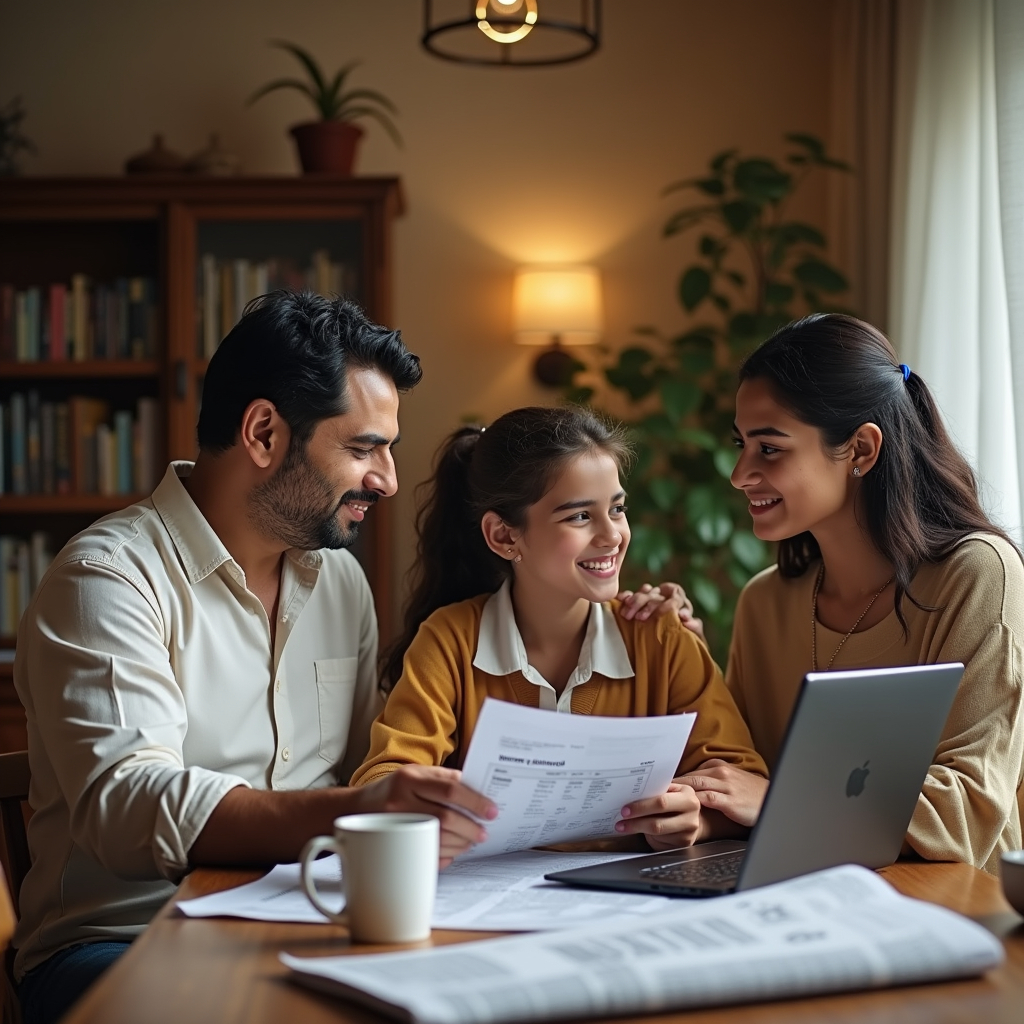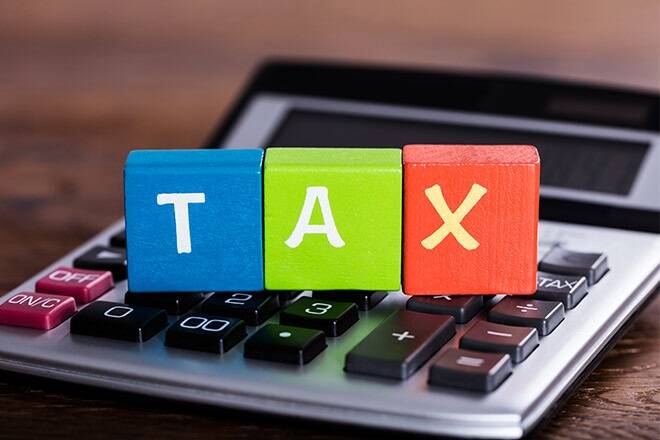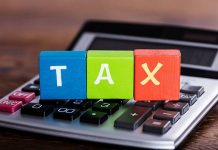This article is written by Ambar Chaurasia. In this article, the author provides a detailed study of Section 87A of the Income tax Act, 1961, including all of its requirements, calculations, and guidelines. The article also provides an in-depth analysis with respect to the 2024-25 budget. Continue reading to find out more about the concession, its cap, and how it might be able to reduce your tax obligations.
Table of Contents
Introduction
The rebate under Income Tax Act, 1961 ( hereinafter referred to as IT Act) was introduced by the Government of India through Section 87A so as to provide relief on taxable income which any individual assessee has suffered. People can also avail the rebate during income tax based on their total annual pay if it is below the basic exemption limit. The rebate will be only for residents subject to a cap and the limit of the rebates shall also depend on net taxable income after all deductions under Chapter-VI-A is determined. The primary focus of this Section is to cut taxes in order to free up disposable income especially so amongst low-income earners.
Rebates have gone through various changes over the years which we are going to discuss in this article and it’s often confused with relief U/S 89 of IT Act which is differentiated further. Let’s understand rebate in simple words, a rebate is a partial refund or deduction of the cost of an item or service and in this case it is given on tax payable.
Meaning of rebate under Income Tax Act, 1961
A rebate refers to a reduction in the total tax liability that a taxpayer can claim. It’s a way to decrease the amount of tax you owe based on specific criteria set by the tax authorities. In the IT Act the terms used as a way of reducing the amount of tax to be paid are known as exemptions. Thus, to cut taxes, the instruments of subsidies were given to deserving people by the government.
Key features of a tax rebate
- Rebate is accounted for when tax is computed on a taxable income. This rebate will actually reduce the overall amount of tax that is supposed to be paid by an individual.
- For example, where the calculated tax is 15,000 and the rebate is given is 12,500 then the actual amount paid to the government is 2,500 only.
- It is liable to only those taxpayers who meet some requirements such as income limits, residency status, age, or investment that they intend to make that they will be eligible for rebates; these rebates usually accompany several conditions.
- Restricted to tax liability: A rebate shall not be used in the manner to claim a refund since the amount to be refunded cannot in any way be further reduced beyond the amount of tax that may be required to be paid out.
Example of a tax rebate
This was stated earlier that an additional rebate of up to Rs. 25,000 is allowed to recipients of total income up to Rs. 7,00,000 under Section 87A if they choose a new tax regime. This means in case the computed tax is within this range then the eligible taxpayers are allowed to deduct their tax payable by a maximum of Rs. 25000.
Importance of tax rebates
- Tax relief: Another major role of rebates is that they ensure that the lower to middle income group of taxpayers should also get to spend some extra bucks, which should otherwise have been paid as taxes.
- Encouraging certain behaviour: It can also be of assistance to the taxpayers in influencing particular behaviours like the advancement of the state of the overall economy, for example, in investing in certain savings.
- Encourages equity: A rebate plays a very important role in determining that the tax system will be fair since this will ease the burden on a certain individual or group of individuals compared to others.
What is Section 87A of Income tax Act
Section 87A of the IT Act, 1961, provides a rebate to individual taxpayers, reducing their overall tax liability. It is aimed at providing relief to low-income earners.

Eligibility criteria
- Section 87A allows a rebate on payment of taxes to individual residents. As per the above clause, no refund claim can be made by a non-resident individual or any firm or business.
- Senior citizens who fall in age group 60-80 years can avail refund under Section 87A.
- Premium rebates cannot be claimed by super senior citizens aged 80 and above.
- The rebate will be applicable on total income tax before adding cess @ 4 percent health and education cess.
- The total taxable income after deduction under Chapter VI-A should not exceed Rs. 5 lakh for the rebate to be applicable.
- Under the new regime, the total income after deduction shall not exceed the threshold limit of Rs. 7 Lakhs for FY – 2023-2024(AY- 2024-2025) and Rs. 5 Lakhs under the old regime.
The rebate serves as an incentive to ensure that anyone subject to the laws pertaining to taxes is compliant. Financial relief is ensured for those eligible through a reduction or elimination of tax liability.
The role played by Section 87A is advantageous to people who fall in the middle class category in terms of incomes in the sense that it maximises their incomes by reducing a certain part of their taxes, hence saving money to be used perhaps in investing. For taxpayers in order to avail this opportunity, proper preparation of taxes, awareness of the refund advantages, and the eligibility criteria therein will help them get what they deserve.
| Aspect | Details |
| Income limitations | The total income which is liable to tax in the case of the assessee does not exceed Rs. 5 lakh or 7 lakh (as the case maybe) after all the amount of deductions, if any, permitted under chapter VI-A is claimed. Aggregate taxable income is calculated as total income reduced by allowance expenses mentioned under the gross total income for instance under Section 80C, 80D, 80G and many more. |
| Age and gender | It does not matter how old the claimant is or, he or she is a male or female on this rebate(except super senior citizens above the age of 80). For instance senior citizens and the other citizens if they fall under the income requirement are allowed to apply. |
| Tax regime | The rebate has been announced under the old and new tax systems of the country. The taxpayers can select any of the regimes while submitting their return, and if they fall under the specified category they are free to claim the rebate. |
| Eligibility | A resident individual who has the net taxable income of Rs 5 lakh or 7 lakh (as the case maybe). |
| Calculation | Where the said amount computed on such income is five thousand rupees or less, he or she will be allowed rebate under Section 87A and will enable him or her to pay nil tax. |
Changes over the years
In the Finance Act, 2016 the limit of taxable income for claiming the rebate under Section 87A was increased to ₹5 lakh. The rebate amount remained the same at ₹2,000.
In the Finance Act, 2019 introduced changes in tax slabs and rates under the new tax regime. However, Section 87A continued to offer relief to taxpayers whose income did not exceed ₹5 lakh.
In the Finance Act, 2020 the rebate limit was increased significantly to ₹12,500. This was part of a broader reform to provide more substantial relief to lower-income individuals. As a result, taxpayers with income up to ₹12.5 lakh could claim a full rebate, making their tax liability effectively zero.
In the Finance Act, 2023 the rebate limit was adjusted to ₹25,000 for individuals with income up to ₹7 lakh, providing a more considerable tax relief. This change aimed to further support individuals in the lower-middle-income bracket.
As of the latest updates, Section 87A allows a rebate of up to ₹25,000 for individuals whose taxable income is up to ₹7 lakh. This rebate directly reduces the income tax liability of the eligible taxpayers.
Section 87A was introduced to provide tax relief and encourage compliance among individual taxpayers with modest incomes. By adjusting the rebate limits and income thresholds over the years, the government has aimed to address inflation and changes in income levels while ensuring that tax relief is progressive and reaches those most in need.
In the New tax regime, an assessee will get a maximum of Rs 7 Lakh as Refund for FY 2023-24 (AY- 2024-2025). In order to increase revenue under the new tax structure, several changes were made in the Budget of 2023. It essentially means that a resident individual is liable to pay tax on his taxable income beyond Rs 7,00,000 and can get the maximum benefit of up to Rs. 25,000 or amount of tax payable whichever is lower. But the quantum of threshold amount Rs. 12,500 shall remain same as in earlier tax regime for income up to Rs.5,00,000.
Any long-term capital gain from sale of listed equity shares or mutual funds cannot be allowed as rebate under that head, although refund u/s 87A on such income is possible. Simply put, Section 87A is not refundable in the case of income from gaming, gambling, VDA or a special rate as along with other receipts but is applicable for short term capital gains on equity shares.

Marginal relief for new tax regime under Section 87A of the Income tax Act, 1961
Previously as per old tax regime and individual taxpayers paying taxes under the previous system can now avail a rebate of Rs. 12,500 if their total income for the previous financial year did not exceed Rs. 5,00,000. Rebate shall not exceed Rs.12,500. In other cases no refund will be made if the total income exceeds Rs.5,00,000/-.
In other words, as soon as income goes over a certain limit, a person cannot claim any rebates whatsoever. This is harsh as even with an extra Rs. 100 increase in the income from Rs. 7,00,000 to Rs. 7,00,100 the income tax rises from nil to Rs. 25010. Thankfully, the government has given relief up to Rs. 7,27,770. This means that the incremental tax cannot exceed the incremental income, to this level of income. Any value beyond Rs. 7, 27,770, there is no respite and full taxes are payable. To recap, please remember that this marginal relief is allowed only by this new regime.
Let’s take an example to understand the marginal relief under rebate 87A of the IT Act.
| Tax | ||
| Net taxable income | 7,16,000 | |
| Tax per slab | New regime(%) | |
| Up to Rs 3,00,000 | NA | – |
| Rs 3,00,000 to Rs 6,00,000 | 5% | 15,000 |
| Rs 6,00,000 to Rs 900,000 | 10% | 11,600 |
| Rs 9,00,000 to Rs 12,00,000 | NA | – |
| Rs 12,00,000 to Rs 1500,000 | NA | – |
| Above Rs 15,00,000 | NA | – |
| Total Tax before Rebate | 26,600 | |
| Less: Rebate U/s 87A of the Act up to 7 Lakhs | ||
| Step 1 Marginal relief: (7,16,00-7,00,000) | 16,000 | |
| Step: 2 (Tax payable -marginal relief) | 26,600-16,000 | 10,600 |
| Net tax after rebate (Step:3-Tax payable – step2) | 16,000 | |
| Add: Health & education cess | 640 | |
| Tax on total income | 16,640 | |
Difference between rebate u/s 87A and relief u/s 89
There are several distinctions between Section 89 and 87A, aside from the fact that one is a relief and the other one is a rebate.
| Aspect | Rebate under Section 87A | Relief under Section 89 |
| Purpose | To provide tax relief to individual taxpayers with low income. | To provide relief for tax payable due to arrears of salary or advance salary received. |
| Eligibility | Resident individuals with taxable income up to a specified limit. | Taxpayers who receive arrears of salary or advance salary and face a higher tax liability due to it. |
| Nature of Benefit | Direct reduction in income tax liability. | Relief calculated as a difference in tax payable due to arrears/advance salary versus normal salary. |
| Maximum Amount | Fixed amount as specified (e.g., ₹25,000 as per the latest provisions). | No fixed amount; relief depends on the tax impact of arrears/advance salary. |
| Application | Automatically applies while computing income tax if eligibility criteria are met. | Requires a specific claim to be made using Form 10E with tax returns. |
| Income Limit | Varies based on amendments (e.g., ₹7 lakh as per latest provisions). | Not dependent on a specific income limit but on the additional tax burden due to arrears. |
| Calculation | A flat rebate amount is deducted from the total tax liability. | Relief is calculated by comparing the tax payable on the total income (including arrears) versus the tax that would have been payable without arrears. |
| Forms/Documentation | No special form required; automatically considered during tax computation. | Requires filing of Form 10E along with the income tax return. |
| Applicability | Generally applicable to regular taxpayers based on income thresholds. | Specifically applicable to individuals who receive arrears or advance salary affecting their tax liability. |
Important considerations
Income limit
The only condition which this entity needs to satisfy is that its taxable income should not be more than Rs. 5,00,000 or Rs. 7,00,000. If it is more than that one cannot claim this rebate and has to pay the total tax as per the tax bars provided.
Documentation

While preparing one’s income tax return, common practice is to ensure that the books and other relevant documents attesting to the claim relating to rebate and total income are filed.
Purpose of rebate
The intention behind providing rebate under Section 87A is mainly to retain more on the lower and middle income class and compliance will be promoted through incentive on tax. If an eligible taxpayer has understood this and applied it, he would be in a position to cut down his tax liability dramatically.

Limit of deduction under Section 87A
Section 87A of the IT Act gives a rebate to those whose total income is below a specific limit. Following are the salient features related to the rebate under Section 87A for the financial year 2023-2024 (Assessment Year 2024-2025)
The maximum rebate available under Section 87A is Rs.12,500 and Rs. 25,000.
Effect
One can claim rebate of the entire amount only If his/her total tax liability is less than or equal to Rs. 12,500 or Rs. 25,000 as the case may be, effectively bringing your tax liability to zero.
On the other hand, if the total tax liability exceeds the specified threshold of Rs. 12,500 or Rs. 25,000, one can claim the rebate up to a certain amount that shall reduce the tax liability but not altogether eliminate it.
Example calculation:
1. Calculated tax liability before rebate:
- Mr. Ramesh has a taxable income of Rs 7,00,000
- Assume a basic tax rate of 10% for the sake of simplicity.
- Tax on income above Rs. 5,00,000 (basic exemption limit): Rs. 70,000.
2. Rebate application:
- Since Mr. Ramesh’s total tax liability (Rs. 70,000) exceeds both Rs. 12,500 and Rs. 25,000, he can only claim a rebate up to Rs. 25,000.
3. Rebate adjustment:
- Mr. Ramesh can claim a rebate of Rs. 25,000.
- New tax liability after rebate = Rs. 50,000 – Rs. 25,000 = Rs. 25,000.
In this example, Mr. Ramesh’s initial tax liability was Rs. 50,000. Since this amount exceeded the Rs. 25,000 rebate threshold, he could claim a maximum rebate of Rs. 25,000. This reduces his tax liability to Rs. 25,000, but he still needs to pay this remaining amount.
Applicability
The rebate under Section 87A is available under both old and new tax regimes. This rebate significantly reduces or eliminates tax liability for persons with relatively lower incomes, provided their total income is below the limit specified for the elimination of tax.
What are the steps to claim rebate under Section 87A
The rebate under Section 87A of the IT Act can be claimed by following the given steps:
- Ensure that for the given assessment year, you meet the requirement of a resident individual as well.
- Gather adequate proof that your total taxable income does not go higher than or Rs. 5 lakh or Rs. 7 lakh.
Where the assesses’ net taxable income is Rs. 5 lakh or Rs. 7 lakh, as the case may be, can apply rebate under Section 87A. The quantum of rebate shall be of Rs. 12,500 or Rs. 25,000 as the case may be or the total amount of tax for the relevant assessment year whichever is lesser. The rebate on the other hand shall be reduced from the total tax payable to arrive at the final tax payables.
You will need to file your ITR and claim the rebate therein and it’s important to provide right information to avoid any problem with the Income Tax Department.
Check ITR after OTP is entered. After entering the OTP, there are available methods of verifying the ITR, which include Aadhaar OTP, net banking, or sending the signed physical copy to the Centralised Processing Center.
Example
Let is say your gross income is Rs. 7,00,000 and out of that you are investing Rs. 2. 2 lakh as Chapter VI-A deductions.
| Description | Amount (Rs) |
| Gross total income | 7,00,000/- |
| Less: deduction under chapter VI-A | 2,20,000/- |
| Net taxable income | 4,80,000/- |
| Computation of tax under old regime | |
| Income up to 2.5 Lakh | NIL |
| Income up to 2.5 lakh to 5 lakh | 5% of Rs 2,30,000 = 11,500/- |
Rebate under Section 87A : Rs.11,500 (entire tax liability)
Final tax payable : Rs.0
You can minimise the tax liability and smoothly claim the rebate under Section 87A by following these steps. Maintain all those records and documents that may prove helpful in substantiating the calculation and assertion.
Comparison between the old tax regime and new tax regime

Different benefits and tax rates are provided by India’s old and new tax regimes to cater the taxpayers in different financial situations. The two regimes for the fiscal year 2023–2024 (AY 2024–2025) are mentioned here:
Tax slab for old tax regime
| Income range | Tax rate |
| Up to Rs. 2.5 lakh | No tax |
| Rs. 2,50,001 to Rs. 5 lakh | 5% of income exceeding Rs. 2.5 lakh |
| Rs. 5,00,001 to Rs. 10 lakh | 20% of income exceeding Rs. 5 lakh (plus 5% on income between Rs. 2.5 lakh and Rs. 5 lakh) |
| Above Rs. 10 lakh | 30% of income exceeding Rs. 10 lakh (plus 20% on income between Rs. 5 lakh and Rs. 10 lakh) |
Tax slab for new tax regime
| Income range | Tax rate |
| Up to Rs. 3 lakh | No tax |
| Rs. 3,00,001 to Rs. 6 lakh | 5% of income exceeding Rs. 3 lakh |
| Rs. 6,00,001 to Rs. 9 lakh | 10% of income exceeding Rs. 6 lakh (plus 5% on income between Rs. 3 lakh and Rs. 6 lakh) |
| Rs. 9,00,001 to Rs. 12 lakh | 15% of income exceeding Rs. 9 lakh (plus 10% on income between Rs. 6 lakh and Rs. 9 lakh) |
| Rs. 12,00,001 to Rs. 15 lakh | 20% of income exceeding Rs. 12 lakh (plus 15% on income between Rs. 9 lakh and Rs. 12 lakh) |
| Above Rs. 15 lakh | 30% of income exceeding Rs. 15 lakh (plus 20% on income between Rs. 12 lakh and Rs. 15 lakh) |
Old vs new regime example
Suppose an individual has an income of Rs. 7,75,000. The following table shows the tax calculation under the new and old regimes:
| Particulars | Old tax regime | New tax regime |
| Gross salary | 7,75,000 | 7,75,000 |
| Interest deduction on housing loan (self-occupied) deduction/HRA exemption | – | – |
| Standard deduction | -50,000 | -75,000 |
| Gross total income | 7,25,000 | 7,00,000 |
| Deduction under Section 80C | -50,000 | – |
| Deduction under Section 80D | – | – |
| Deduction under Section 80CCD(1B) | – | – |
| Total taxable income | 6,75,000 | 7,00,000 |
| Tax | 47,500 | 20,000 |
| Rebate | – | -20,000 |
| Surcharge | – | – |
| Cess | 1900 | – |
| Total tax | 49,400 | – |
| Total deductions/exemptions | 1,00,000 | 75,000 |
What deductions and exemptions are allowed under the new tax regime and what are not as compared to the old regime
To understand it better let us first know that the new tax regime was introduced in the year 2020 and the taxpayers since then have been given a choice to either pay their taxes as per the old regime and new regime, hence the comparison table has 4 different sections one for old regime and the other three for new tax regime as per the financial years.

Here is a comparison between the deductions and exemptions available under the new and the old tax regime:
| Particulars | Old tax regime | New tax regime(until 31st March 2023) | New tax regime (FY 2023-24) | New tax regime (FY 2024-25) |
| Income level for rebate eligibility | ₹ 5 lakhs | ₹ 5 lakhs | ₹ 7 lakhs | ₹ 7 lakhs |
| Standard deduction | ₹ 50,000 | – | ₹ 50,000 | ₹ 75,000 |
| Effective tax-free salary income | ₹ 5.5 lakhs | ₹ 5 lakhs | ₹ 7.5 lakhs | ₹ 7.75 lakhs |
| Rebate u/s 87A | ₹12,500 | ₹12,500 | ₹25,000 | ₹25,000 |
| HRA exemption | ✓ | X | X | X |
| Leave travel allowance (LTA) | ✓ | X | X | X |
| Other allowances including food allowance of Rs 50/meal subject to 2 meals a day | ✓ | X | X | X |
| Standard deduction | ✓ | X | ✓ | ✓ |
| Entertainment allowance and professional tax | ✓ | X | X | X |
| Perquisites for official purposes | ✓ | ✓ | ✓ | ✓ |
| Interest on home loan u/s 24b on: self-occupied or vacant property | ✓ | X | X | X |
| Interest on home loan u/s 24b on: let-out property | ✓ | ✓ | ✓ | ✓ |
| Deduction u/s 80C (EPF | LIC | ELSS | PPF | FD | children’s tuition fee etc) | ✓ | X | X | X |
| Employee’s (own) contribution to NPS | ✓ | X | X | X |
| Employer’s contribution to NPS | ✓ | ✓ | ✓ | ✓ |
| Medical insurance premium – 80D | ✓ | X | X | X |
| Disabled individual – 80U | ✓ | X | X | X |
| Interest on education loan – 80E | ✓ | X | X | X |
| Interest on electric vehicle loan – 80EEB | ✓ | X | X | X |
| Donation to political party/trust etc – 80G | ✓ | X | X | X |
| Savings bank Interest u/s 80TTA and 80TTB | ✓ | X | X | X |
| Other chapter VI-A deductions | ✓ | X | X | X |
| All contributions to agniveer corpus fund – 80CCH | ✓ | Did not exist | ✓ | ✓ |
| Deduction on family pension income | ✓ | X | ✓ | ✓ |
| Gifts upto Rs 50,000 | ✓ | ✓ | ✓ | ✓ |
| Exemption on voluntary retirement 10(10C) | ✓ | ✓ | ✓ | ✓ |
| Exemption on gratuity u/s 10(10) | ✓ | ✓ | ✓ | ✓ |
| Exemption on leave encashment u/s 10(10AA) | ✓ | ✓ | ✓ | ✓ |
| Daily allowance | ✓ | ✓ | ✓ | ✓ |
| Conveyance allowance | ✓ | ✓ | ✓ | ✓ |
| Transport allowance for a specially-abled person | ✓ | ✓ | ✓ | ✓ |
Do you get a tax rebate under Section 87A for short term gains from sale of shares/mutual fund ?
The taxes on stocks and mutual funds depend on the length of holding period and are in the special rate of 10% for the long-term gains exceeding Rs 1 lakh and for the short term gains there is a tax at a special rate of 15%.
According to Section 112A (6) it has been provided that long term gains shall not be entitled to refund under Section 87A but nothing has been said about short term gains.
You are not permitted to get a refund under Section 87A in case you have Long Term Capital Gains (LTCG) from short term capital assets like listed equity shares, or equity oriented mutual funds. Regarding LTCG, it is equally important for you to be aware that you can actually claim for 87A refund on other forms of assets. Any winnings from virtual digital assets, any games, bet, game show, and online gambling is non refundable.
However, regarding Short Term Capital Gains (SCTG), the issue becomes a concern since the laws and regulations implemented in the software within the income tax department denies refunds even for SCTG. This is due to the fact that there are a lot of legal meanings and interpretations.
As per CA Hardik kakadiya, (President,Chartered Accountants Association, Surat) there is an ill-interpretation of words ‘Notwithstanding anything contained in this Act but subject to the provisions of this Chapter’ as provided in Section 115 BAC 1A which came into force from financial year 2020-2021 via Finance Act 2020, where Section was inserted with effect from 1st April 2024 but the law has to give valid interpretation in favour of the taxpayer. The Ministry should act fast since this is almost the end of the filing season for a non audit taxpayer. “
Rebate limit under Section 87A for all the financial years
The following table shows the rebate limit from financial year 2013-14 till 2023-24. Till now the rebate limit has been changed twice, while the taxable income limit was up to Rs. 5 lakh till the year 2022-23 which has now increased to Rs. 7 lakhs.
| Financial year | Rebate limit | Taxable income limit |
| 2013-14 | ₹2,000 | Up to ₹5 lakh |
| 2014-15 | ₹2,000 | Up to ₹5 lakh |
| 2015-16 | ₹2,000 | Up to ₹5 lakh |
| 2016-17 | ₹2,000 | Up to ₹5 lakh |
| 2017-18 | ₹2,000 | Up to ₹5 lakh |
| 2018-19 | ₹2,000 | Up to ₹5 lakh |
| 2019-20 | ₹2,000 | Up to ₹5 lakh |
| 2020-21 | ₹12,500 | Up to ₹5 lakh |
| 2021-22 | ₹12,500 | Up to ₹5 lakh |
| 2022-23 | ₹12,500 | Up to ₹5 lakh |
| 2023-2024 | ₹12,500 | Up to ₹5 lakh |
| 2024-2025 | ₹25,000(under the new tax regime) | Up to ₹7 lakh |
Conclusion
It will be recalled that Section 87A of the Income Tax Act offers considerable relief to individual taxpayers especially those in the lower to middle income earners. Financially, it allows a rebate of up to Rs 12,500 under the old tax regime & up to Rs 25,000 under the new tax regime on the resident individuals whose total income after deductions, does not exceed Rs 5 lakh in case of old regime and Rs 7 lakh of the new regime. This rebate can minimise or totally wipe out taxation liabilities, support stability in handling of funds, as well as increase compliance to tax laws.
However, these rebates do not cover income derived from activities such as sales of other forms of capital goods for example through sales of property that has been held for the long-term. Now the Taxpayers have no option other than switch over to the new tax regime or stick to the old one depending upon the taxpayers financial capacity and within allowable deductions and with an eye on maximum benefits to be obtained. Section 87A also benefits lower income earners as it also adds and expands the tax base since some people are enticed to file for tax returns.

For the purpose of accessing this provision fully, a taxpayer should be aware of the provisions of rebate, know the requirements for the rebate, compute his or her taxable income correctly, file returns as and when required and in the correct manner. Therefore, Section 87A reveals the government’s desire for a just taxation system and pays for personal economic initiatives, as well as general economic welfare.
In conclusion it can be said that Section 87A demonstrated how much the government both then and now is ready for the creation of a more nondiscriminatory and fair tax system. It also tends to advance the interests of the individual economic self-interest, besides helping in the stabilisation of the national economy as well. To accomplish this, and in order to secure as many gains for the taxpayers as possible and to prepare their taxes as effectively as possible, they have to be informed on such laws.
Frequently Asked Questions (FAQs)
Can senior citizens claim the rebate under Section 87A?
Yes, if their total taxable income does not exceed Rs. 500,000 then the senior citizens who are residing individually are allowed to claim the rebate under Section 87A. People of all ages are free to engage in this rebate and there are no restrictions to that effect.
Is the rebate under Section 87A available under the new tax regime?
It is noteworthy that under both the old and new tax regime, there is rebate under Section 87A. The taxpayers can choose to go for either of the two regimes while filing their returns so that they qualify for the rebate provided their taxable income is within the threshold limits.
How does the rebate under Section 87A apply in the tax calculation?
After calculating the total tax liability based on the applicable tax slabs, the rebate under Section 87A is subtracted from the tax payable. If the tax liability is Rs. 12,500/ Rs.25,000 or less, the rebate will reduce the tax payable to zero.
What happens if my taxable income exceeds 5 or 7 lakh?
You cannot claim the Section 87A rebate if your taxable income is more than Rs. 5 lakh or Rs. 7 lakh. You will be required to pay the tax due without receiving a rebate, as determined by the relevant tax slabs.
Is there any rebate available under Section 87A for non–resident Indians (NRIs)?
No, the Section 87A rebate is only given to those individuals that are registered as residents. It is an adaptable scheme which allows only the residents with the taxable income of up to Rs. 5 lakh.
Is there any formality which I have to fulfil to get the rebate as per section 87A of Income Tax Act?
In order to claim the rebate under Section 87A of the IT Act there is no special documentation needed. However, in the ITR you must fill in your details of income and deductions and it is better that you have some proof in case the Income Tax Department asks for them.
References
- https://www.canarahsbclife.com/blog/tax-saving/what-is-tax-rebate-under-section-87a
- https://www.incometax.gov.in/iec/foportal/help/individual/return-applicable
- https://cleartax.in/s/income-tax-rebate-us-87a
- https://taxguru.in/income-tax/issues-tax-rebate-section-87a-special-income-wef-5th-july-2024.html
Students of Lawsikho courses regularly produce writing assignments and work on practical exercises as a part of their coursework and develop themselves in real-life practical skills.
LawSikho has created a telegram group for exchanging legal knowledge, referrals, and various opportunities. You can click on this link and join:
Follow us on Instagram and subscribe to our YouTube channel for more amazing legal content.
 Serato DJ Crack 2025Serato DJ PRO Crack
Serato DJ Crack 2025Serato DJ PRO Crack










 Allow notifications
Allow notifications



